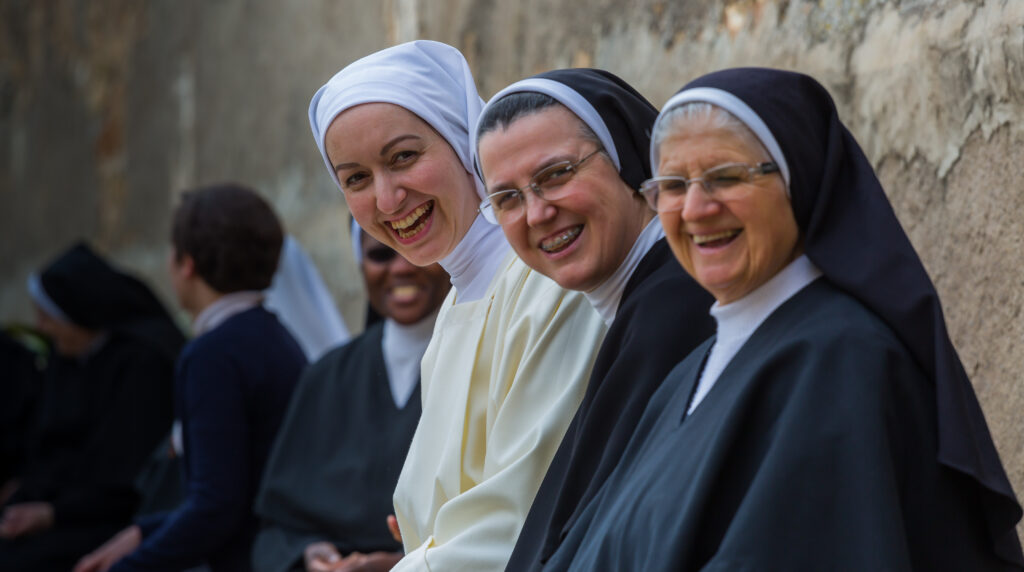Augustinian Nuns Canonesses of St. Dorothy
Families of monastic orders dedicated to the contemplative life

The birth of the Order of St. Augustine dates back to 1243, the year in which Pope Innocent IV created a new Mendicant Order, the third after the Franciscans and Dominicans, to profess “the rule and way of life of Blessed Augustine”.
Like the other mendicant orders, it has a male branch (Augustinian friars) and a female branch (Augustinian sisters or sorelas). The latter have been called the Second Augustinian Order, although nowadays, they are known as Augustinian Sisters of Contemplative Life.
The Augustinian Sisters sought a balance between the active and contemplative life, prayer, helping others, and proclaiming the good news of God. In many convents, they welcomed the sick, young aspirants and pilgrims.
Changes introduced at the Council of Trent and the Second Vatican Council
The Council of Trent imposed a strict enclosure on all monasteries of nuns so that the Augustinian nuns abandoned what little active life they had to devote themselves entirely to contemplation, thus leaving the friars the task of a more intense apostolate.
On the other hand, the Second Vatican Council allowed the female mendicant orders to develop an apostolate, even making it possible for them to leave the monastery in order to carry out this work.
1. Internal organisation
They have a mother Prioress, sometimes also called Abbess, and are under the obedience of the Father General of the Augustinian Order.
2. Moniales vs. canonesses religious sisters
In the 8th century a clear distinction was already made between “moniales” (nuns) in the sense of greater isolation and enclosure, with a Rule like that of St. Benedict, and “canonesses” dedicated to liturgical and ecclesial service.
During the Middle Ages these female communities developed and flourished intensively. Just as the clerics of common life (Canons Regular) adopted the Rule of St. Augustine and, from the Roman Synod of Lateran in 1059, under the Pontificate of Nicholas II, the ancient Canonical Order was revitalised under the growing influence of the Augustinian Rule, so too did the female communities, thus appearing the Augustinian Canonesses.
3. Ideology
The ideology of the Canonesses or Augustinian Canonesses is expressed through four basic aspects:
– Prayer.
– Liturgical activity.
– Fraternity, an aspect very much emphasized in the Rule of St. Augustine, which manifests mutual love, ecclesial spirit and diocesanity, to the point that the life of the Augustinian Nuns Canonesses is very much rooted in the local Church, because they were born for the service of the particular Churches.
– Sanctification, centred on the apostolic, missionary and evangelising work of the Church.
4. Habit
They have a Mother Prioress, sometimes also called Abbess, and are under the obedience of the Father General of the Augustinian Order.
Related

Reflection by Bishop Enrique Díaz: The Lord’s mercy is eternal. Alleluia
Enrique Díaz
27 April, 2025
5 min

After Eight Days Jesus Arrived: Commentary by Fr. Jorge Miró
Jorge Miró
26 April, 2025
3 min

The Perspectivas del Trabajo Foundation is founded with the aim of promoting virtues for professional development
Exaudi Staff
25 April, 2025
2 min

Reflection by Bishop Enrique Díaz: Alleluia, alleluia
Enrique Díaz
20 April, 2025
5 min
 (EN)
(EN)
 (ES)
(ES)
 (IT)
(IT)

